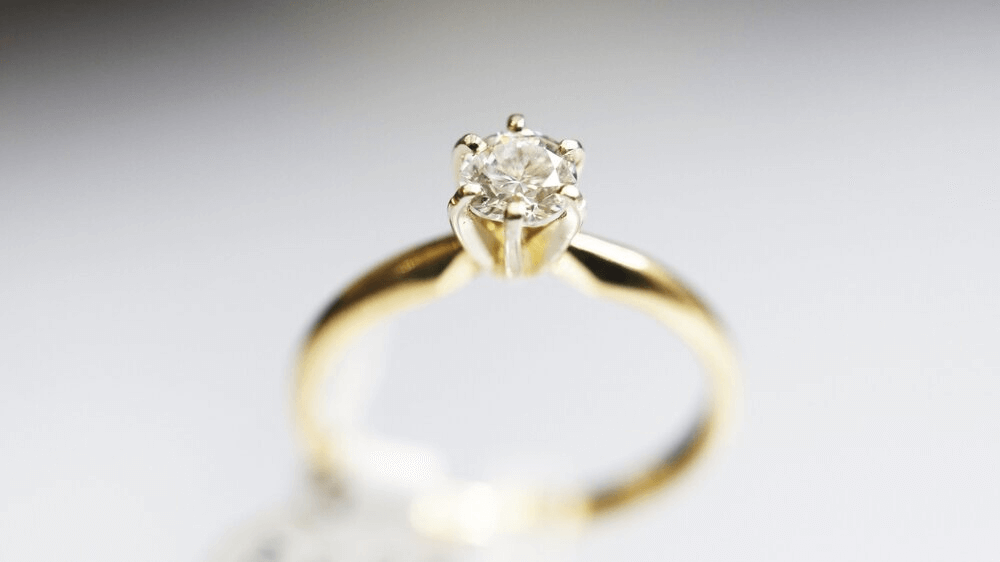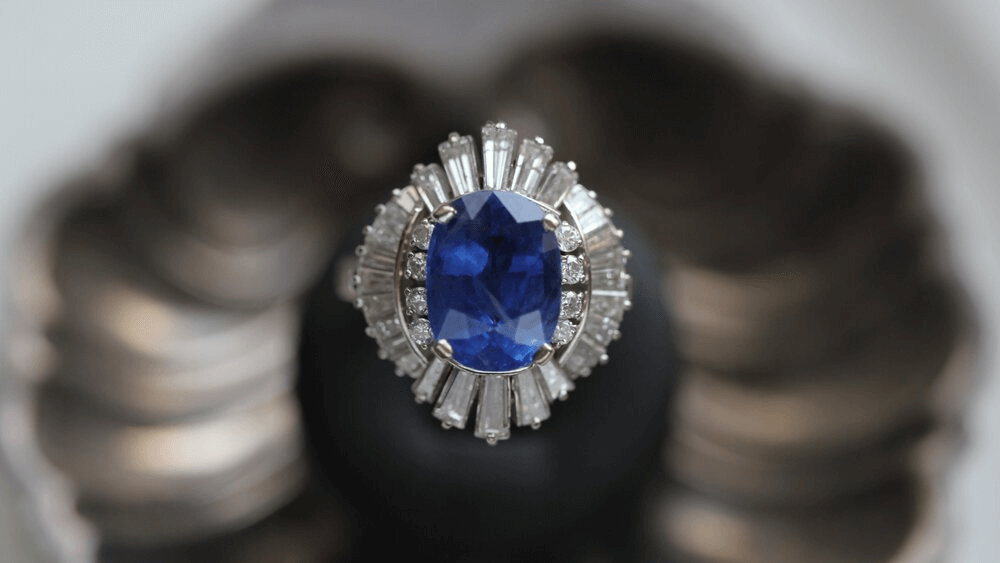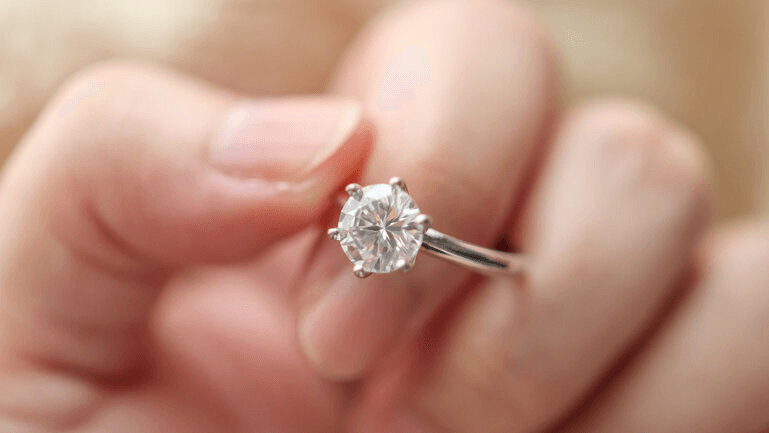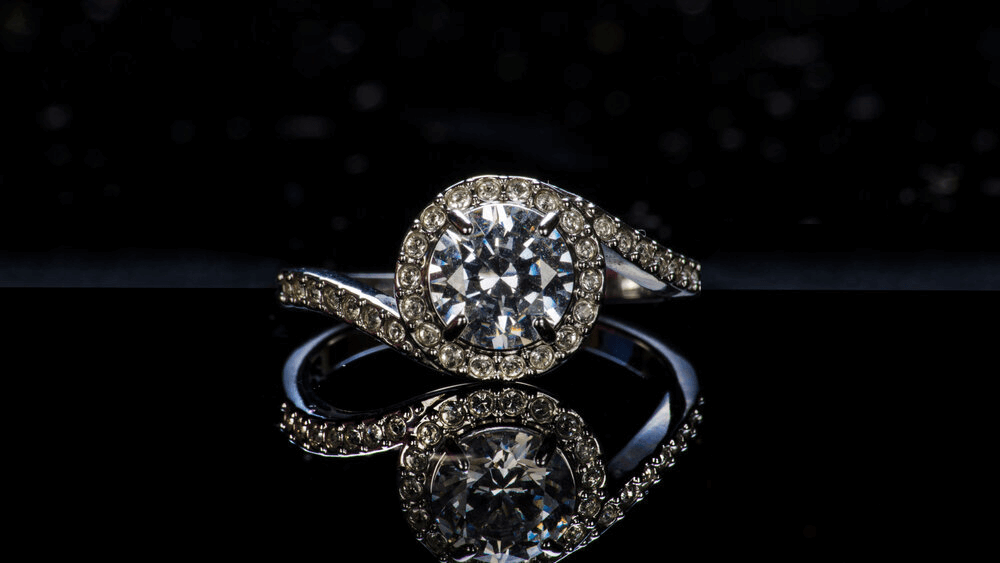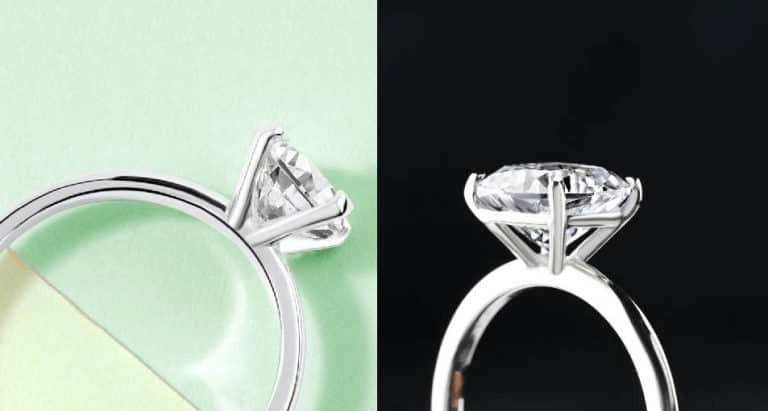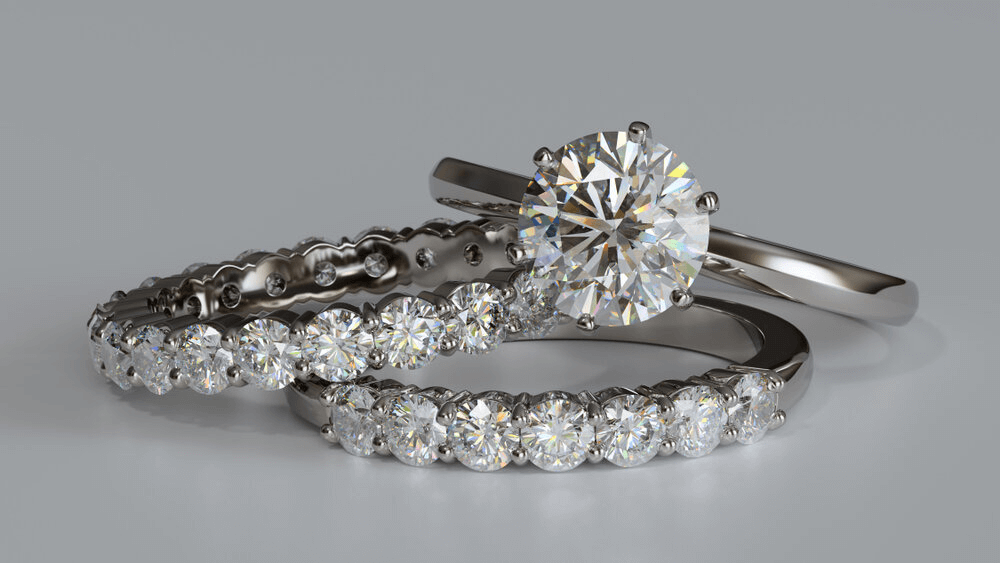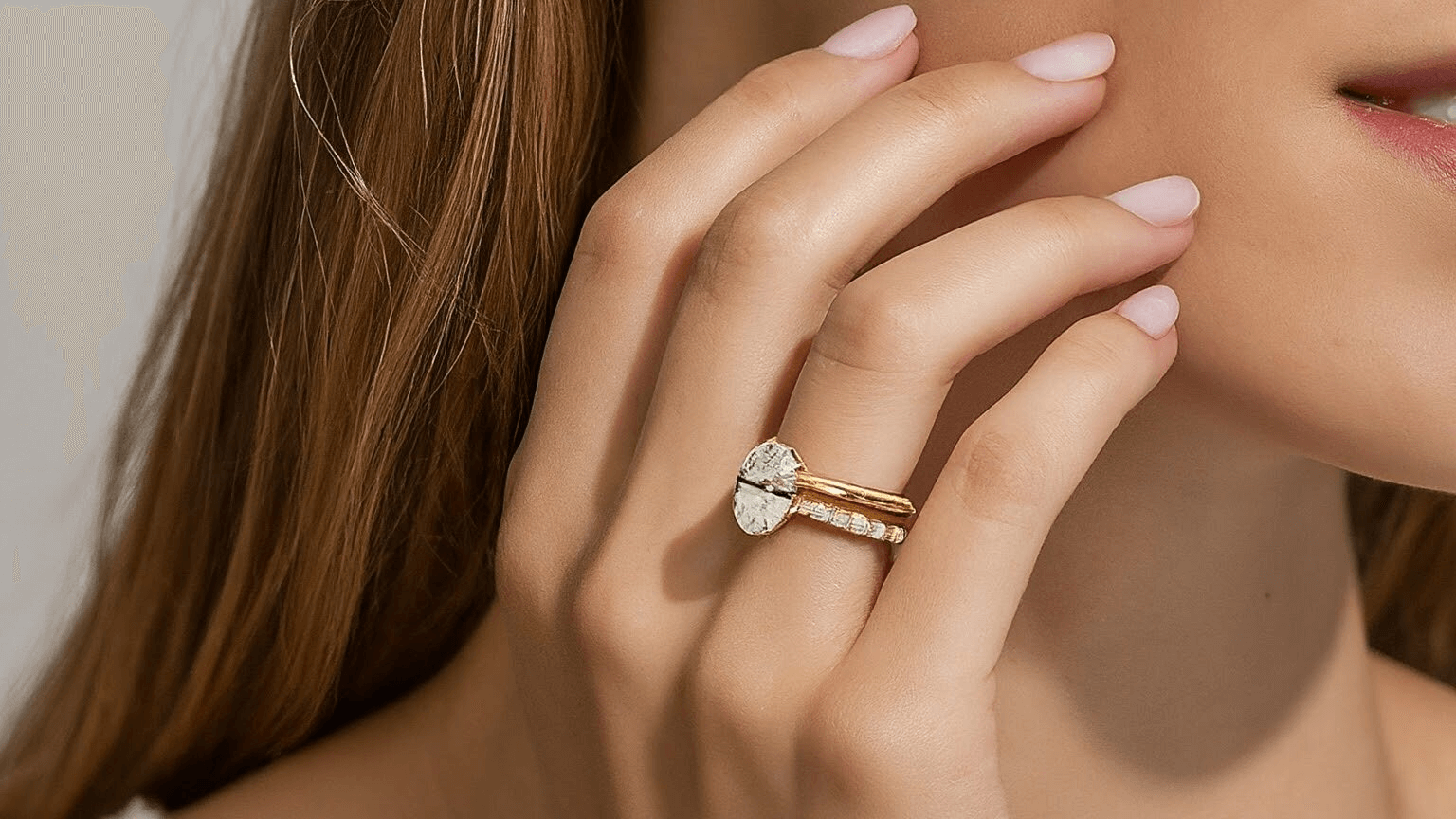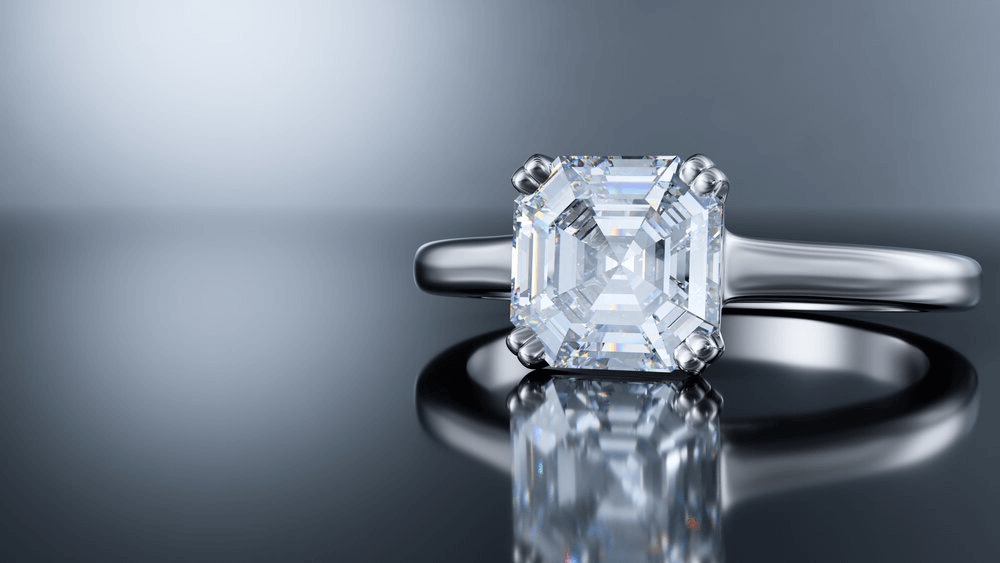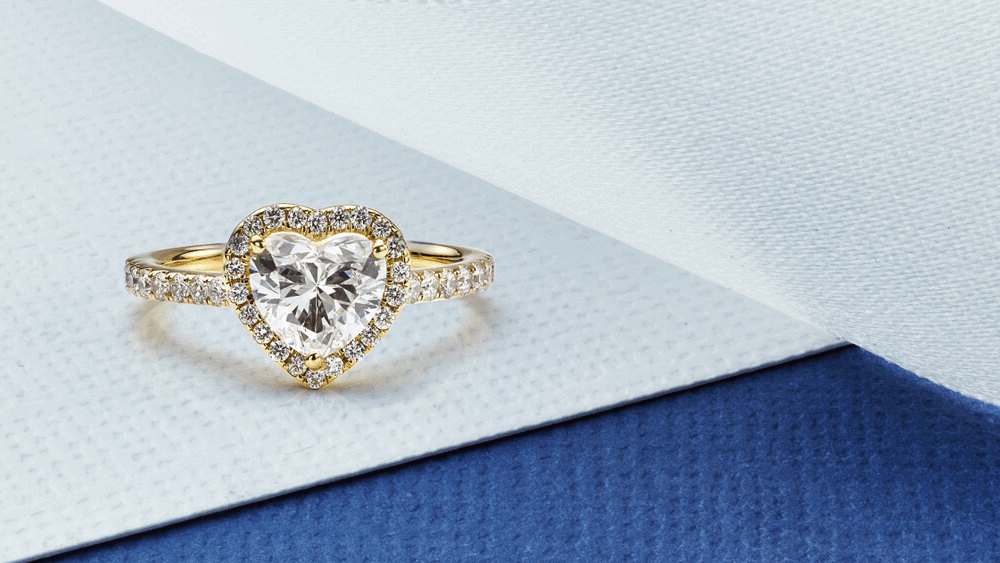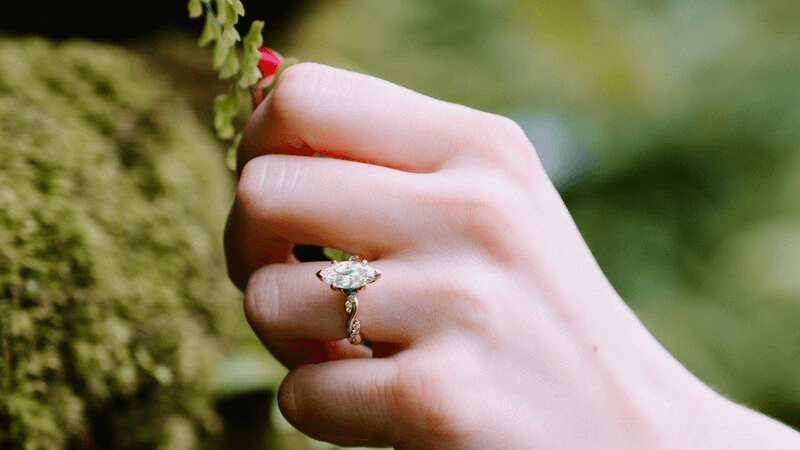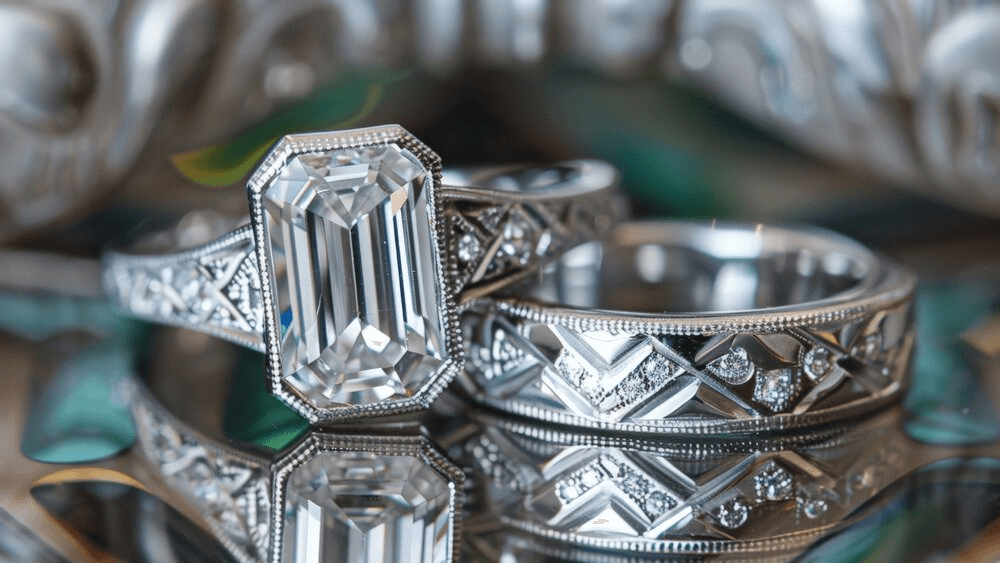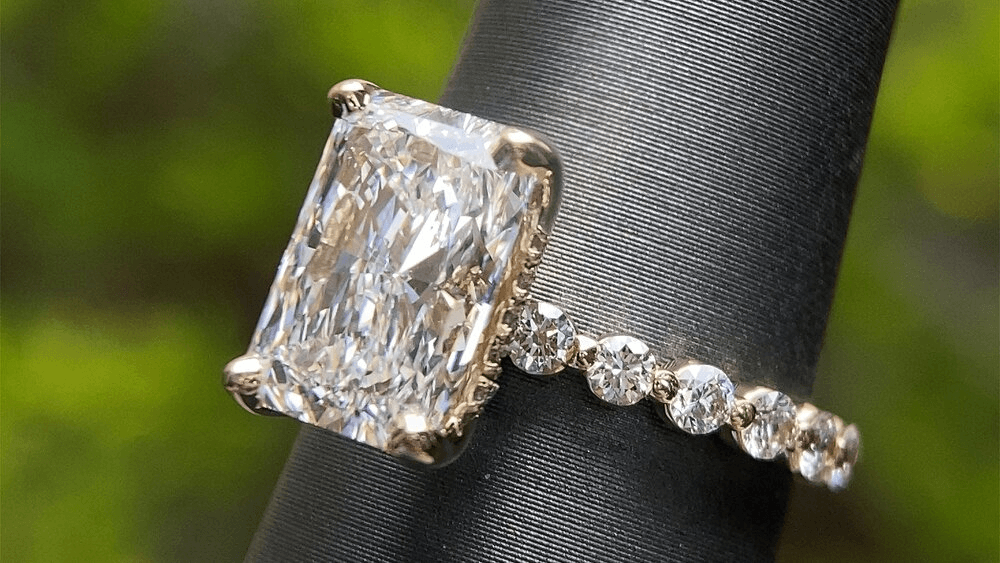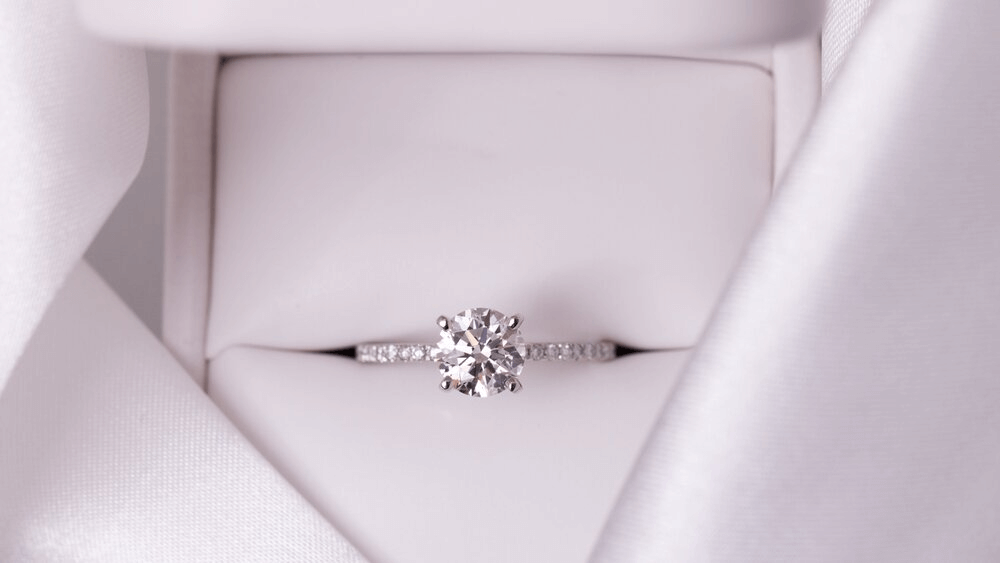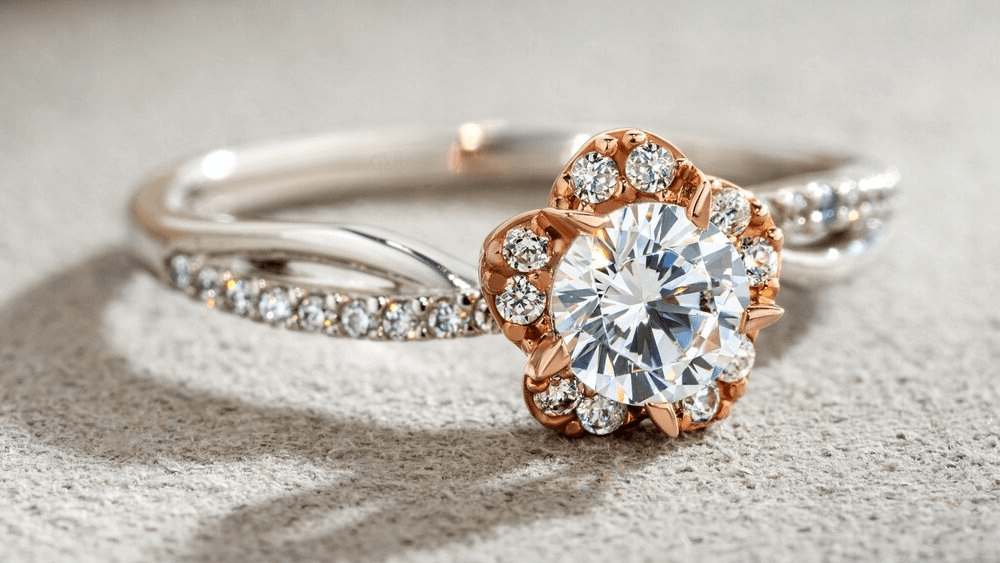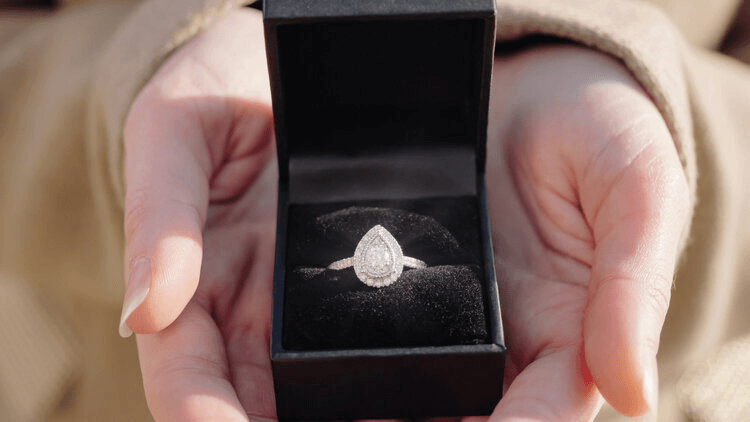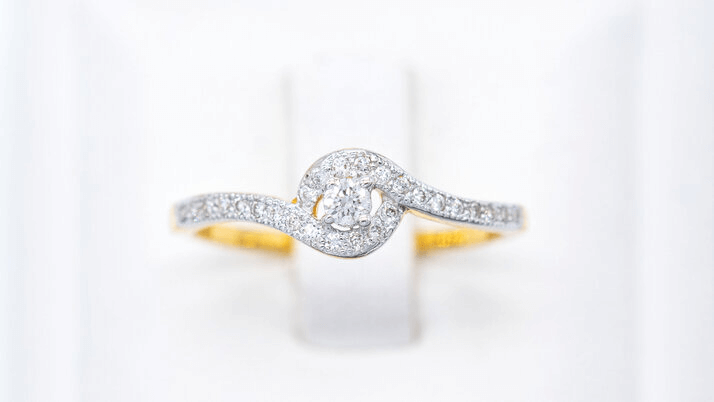High vs. Low Setting Engagement Rings: Unveiling the Sparkle

By Gary A.

Edited by Olivia H.
Published Aug 13, 2024
Edited on Dec 18, 2024
Learn about the differences between high and low setting engagement rings and how each setting influences the brilliance, comfort, and overall appearance of your diamond.

Navigate this guide:
- 7 Quick Tips for Choosing Between High Setting and Low Setting Engagement Rings
- Introduction to Engagement Ring Setting Height
- High Setting Engagement Rings Explained
- Low Setting Engagement Rings Demystified
- Comparing High vs. Low Settings: Visual Impact and Comfort
- Our Expert Take
- 10 Frequently Asked Questions About High vs. Low Setting Engagement Rings
Before we dive deeper into the specifics, here are some practical tips to help guide your decision-making process:
7 Quick Tips for Choosing Between High Setting and Low Setting Engagement Rings
Tip 1: Lifestyle Considerations:
- High Setting: If you or your partner lead an active lifestyle, participate in sports, or work with your hands, a high setting might be more prone to snagging or getting damaged.
- Low Setting: Offers more protection to the diamond and is less likely to catch on things, making it ideal for those with active lifestyles.
Tip 2: Visual Impact:
- High Setting: Elevates the diamond, making it more prominent and potentially allowing it to capture more light, which can enhance its brilliance.
- Low Setting: While it might be subtler, it can offer a sleek, modern look and is less likely to obstruct the view of intricate band designs.
Tip 3: Stone Security:
- High Setting: The elevated position might expose the diamond to more potential knocks, which could loosen the setting over time.
- Low Setting: Generally offers more protection to the stone, reducing the risk of it getting knocked out of its setting.
Tip 4: Wedding Band Compatibility:
- High Setting: Often allows for a wider variety of wedding bands to sit flush against the engagement ring.
- Low Setting: Might require a custom or curved wedding band to sit flush against the engagement ring.
Tip 5: Maintenance and Cleaning:
- High Setting: Due to its elevation, it might accumulate more dirt and debris underneath, requiring more frequent cleaning.
- Low Setting: Sits closer to the finger, potentially reducing the accumulation of dirt but might be harder to clean underneath the stone.
Tip 6: Size Perception:
- High Setting: Can make the diamond appear larger due to its prominence.
- Low Setting: While it might make the diamond appear smaller, it offers a streamlined look.
Tip 7: Budget and Value:
- Ensure you understand the 4Cs (Cut, Color, Clarity, Carat) of diamonds to get the best value for your budget.
- Remember that settings can influence the perceived size and brilliance of the diamond. A high-quality setting can enhance a smaller or less brilliant diamond, potentially offering more value for your money.
Now that you’ve got these practical tips, use Jeweler AI below to find the perfect engagement ring that suits your style and budget:
Introduction to Engagement Ring Setting Height
We tend to think about engagement rings in terms of what they look like from above. In other words, how they look when your hand is stretched out in front of you, palm facing away, and that gorgeous rock’s table and crown right there for you to admire. There’s nothing wrong with that. It’s arguably one of the best ways to look at any engagement ring.
But, if you were to spend your life walking around with your hand stretched out in front of you, you’d be missing out on plenty of other design elements and beautiful features that make the engagement ring the heart-stopping, show-stopping, crowd-pleaser that it is.
One of those elements pertains to height. Some diamonds are set very high above the finger, while others lay low – or, as low as a brilliant, fiery diamond can lie, anyway…
High Setting Engagement Rings Explained
As the name suggests, high setting rings or any rings that feature a centre diamond that has been elevated high above the Shank. There’s no specific hope requirement for a ring to be called a high setting engagement ring, but the bottom of the diamond (AKA, the culet) should be at least a few millimetres clear of the Shank in order to qualify.
High setting engagement rings can feature any elements or setting styles. It could be a simple solitaire, a halo, a bezel, and feature any number of decorative embellishments – or be totally minimalistic.
Advantages of High Setting Rings
First and foremost, high settings ensure that a diamond is lifted way above the metalwork of the ring, and the hand itself, which ensures it gets as much light as possible. This is particularly true, of course, if you are pairing a high setting with a minimalistic prong design, rather than something like a halo since prongs allow the most possible light to reach the diamond.
In our experience, enhanced light performance is the main reason people opt for a high setting engagement ring. However, it’s not the only advantage.
A high setting engagement ring also makes the diamond appear a little larger. Think about it, it’s a little like forced perspective in movies. The closer something is to the perceiver, the bigger it looks. If the diamond is lifted high above the band, then, proportionately, it looks larger.
A high setting can also make it easier for the wearer to pair their engagement ring with a wedding band and an eternity ring further down the line. For bulky center settings like halos, raising that diamond higher means that the ‘overhang’ of the center setting won’t bump up against other bands worn on the same finger – or even on the next finger along. For this reason, a high setting engagement ring can be more comfortable for the wearer.
Considerations for High Setting Rings
That said, high setting engagement rings can be a little trickier to wear. Since the diamond is raised higher and more prominently placed on the finger, it’s a lot more prone to snagging. Compare it with the ring style at the opposite end of the spectrum: the flush setting. With this design, the diamond sits level with the band, so there is nothing sticking out. This ring style is very convenient to wear. A high setting engagement ring can make even something as simple as putting your hand through a sleeve or searching in your handbag, tricky. A lot of people get used to this eventually, but the learning curve is real.
That prominence also means that the diamond is slightly more vulnerable to damage. While most daily tasks won’t pose much of a risk to your diamond, it stands to reason that the more it sticks out, the more likely it is to get bumped, knocked, or scraped.
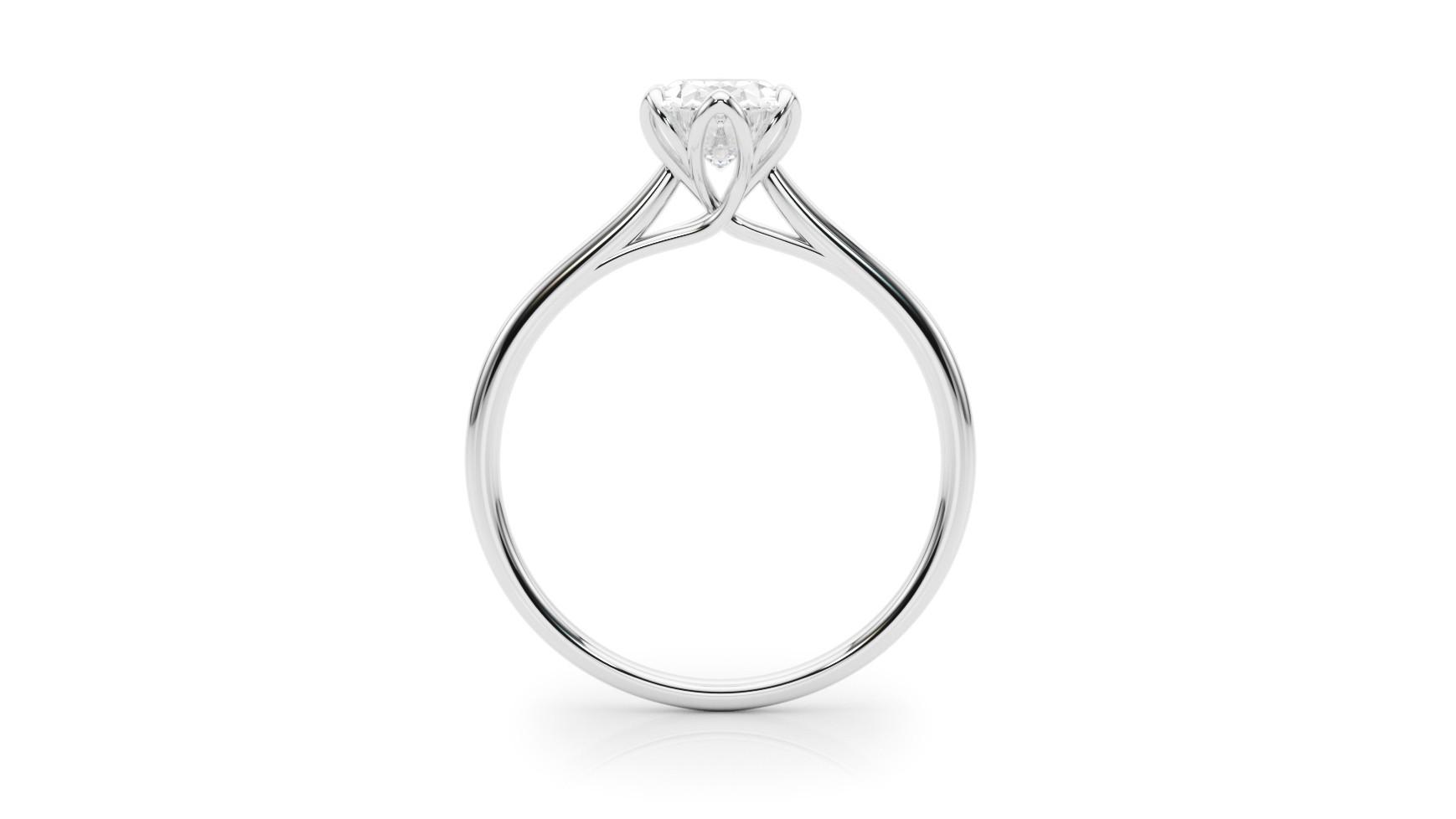
Low Setting Engagement Rings Demystified
Low setting engagement rings are what we are generally more used to seeing. Typically, we would think of low setting engagement rings as the ‘norm’, whereby the diamond’s culet (its lowest point) sits just a millimeter or two above the band.
Now, keep in mind that this still means the diamond has plenty of clearance above the ring. Low set does not mean squat or foreshortened.
Benefits of Low Setting Rings
Low setting engagement rings generally appear the most proportioned. Since we are used to seeing them without one-to-two-millimetre clearance above the band, anything significantly higher than that can appear a little disproportionate. Of course, a beautiful ring design will always compensate for that fact, so don’t be deterred if a high setting is your preferred option. If you’re on the fence, simply keep it in mind.
They are also more convenient to wear. As we mentioned above, high setting engagement rings are a lot more prone to snagging and catching, simply because the diamond is more prominently placed. Low setting engagement rings feel a little more aerodynamic, although, if you’re new to wearing a ring of this type, there will still be a learning curve as you figure out how to do regular-person things without those bumps and snags.
Points to Ponder for Low Setting Rings
Low setting rings still get plenty of light. Again, this all depends on the style of your centre setting. If your diamond is set in a bezel, for instance, don’t expect it to sparkle as much as a solitaire held in place by prongs, even if those two diamonds sit at exactly the same height on the finger. But, if we’re comparing a 4 prong solitaire low set engagement ring with a 4 prong solitaire high set engagement ring, it is unlikely you will notice a significant amount of difference between the two in terms of sparkle.
Low set diamonds will also inevitably appear slightly smaller, but remember this is only an optical illusion. A high setting isn’t going to make a 1 carat diamond look like a 5 carat diamond, or even a 2 carat diamond. A high setting will have a very small impact on the visual impact of the stone, but, for some people, it’s enough to convince them to add those extra millimetres to their centre setting’s height.
Comparing High vs. Low Settings: Visual Impact and Comfort
In terms of visual impact, the high setting engagement ring wins by virtue of the fact that it gives the diamond slightly more light, and the illusion of a bigger size. As we’ve mentioned, this is quite minor, but it’s powerful enough to seal the deal for a lot of shoppers. Then again, a mark against the high setting design when it comes to visual impact is that it can appear somewhat disproportionate. A traditionally lower set solitaire will always be the classic choice.
In terms of comfort, the low setting engagement ring has to be the winner here. Both styles require a grace period as the wearer gets used to carting around a diamond – trust us, as far as ‘learning curves’ go, this one is pretty sweet – but low settings are definitely easier to get used to.

Lifestyle and Ring Setting Compatibility
For anyone who leads a relatively active lifestyle, has kids, or doesn’t like to feel restricted in their daily activities, then we would certainly recommend a low setting engagement ring. Of course, you should always remove your engagement ring for strenuous activities like exercise, or activities that will get the ring dirty, like gardening. But, some of us are simply more on-the-go than others and, for those people, prioritising comfort and wearability is key.
Wedding Band Compatibility and Style Cohesion
Then again, if you know your ring design is going to be kind of bulky – say, if it’s going to feature multiple centre stones, a halo, or even a double halo – we would recommend considering a higher setting. Don’t just think about the engagement ring in isolation. Think about the fact that, eventually, it is going to be worn alongside at least one more ring, and possibly between two rings. When you’ve got three rings side by side, making them fit nicely alongside one another is very important.
But don’t sweat it if you prefer a low set engagement ring. A high setting isn’t your only option. You can pick a wedding band design, for instance, that fits snugly around a halo.
Maintenance, Security, and Durability Concerns
Once again, the low set engagement ring wins here. The diamond is less prominent, which means it’s more secure and durable.
One area where the high set ring wins is in cleaning. Since the metalwork beneath the diamond has more ‘space’, it’s easier to clear out any minor build-up between the prongs.
Our Expert Take
High vs low is one of the questions almost any engagement ring buyer will need to ask themselves, whether they’re going for the simplest design possible – or something a lot more showy and complex. The only exception to the rule is shoppers looking at flush settings which, let’s face it, are a rare choice for an engagement ring.
There are pros and cons to each—you just need to figure out whether a little extra size and sparkle is worth the added hassle of wearing a high set diamond, or whether you’re willing to sacrifice those perks for something more traditional and more wearable.
10 Frequently Asked Questions About High vs. Low Setting Engagement Rings
- Q: What is the main difference between a high and low setting engagement ring?
- A high setting engagement ring elevates the center stone off the band, making it more prominent and potentially more brilliant. A low setting engagement ring keeps the stone closer to the band, offering a sleeker profile and greater protection for the stone.
- Q: Which setting is better for active lifestyles?
- A low setting engagement ring is generally better for those with active lifestyles as it offers more protection against snagging and potential damage.
- Q: Does a high setting make a diamond look bigger?
- Yes, a high setting can make a diamond appear larger because it is more elevated, allowing more light to interact with the stone, enhancing its brilliance and perceived size.
- Q: Can any diamond shape be set in a high or low setting?
- Most diamond shapes can be set in either a high or low setting, but the specific design of the ring and the stone’s size may influence the suitability of the setting.
- Q: Are low setting engagement rings less expensive than high setting rings?
- Not necessarily. The cost depends on various factors, including the type of metal, the size and quality of the center stone, and the complexity of the ring design, rather than just the setting height.
- Q: Is it harder to clean a high setting engagement ring?
- High setting rings can accumulate more dirt underneath the stone, potentially requiring more frequent cleaning compared to low setting rings.
- Q: Will a low setting engagement ring fit any wedding band?
- Low setting rings might require a curved or custom wedding band to sit flush against the engagement ring, depending on the ring’s design.
- Q: Can I change my ring from a high to a low setting (or vice versa) after purchase?
- Modifying a ring from a high to a low setting or vice versa is possible but depends on the ring’s design and structure. It’s best to consult with a jeweler for advice specific to your ring.
- Q: Does the setting height affect the ring’s durability?
- Yes, high settings can be more prone to snagging and potential damage, while low settings generally offer more protection and durability for the center stone.
- Q: How do I decide between a high and low setting engagement ring?
- Consider your lifestyle, the level of care you’re willing to give your ring, aesthetic preferences, and any practical considerations like matching with a wedding band. Trying on different styles can also help you decide.
Elevate Your Love with Precision – Let Jeweler AI find your perfect match in the high vs. low setting engagement ring debate. Start your journey to dazzle today!
FOLLOW-UP GUIDE SERIES





